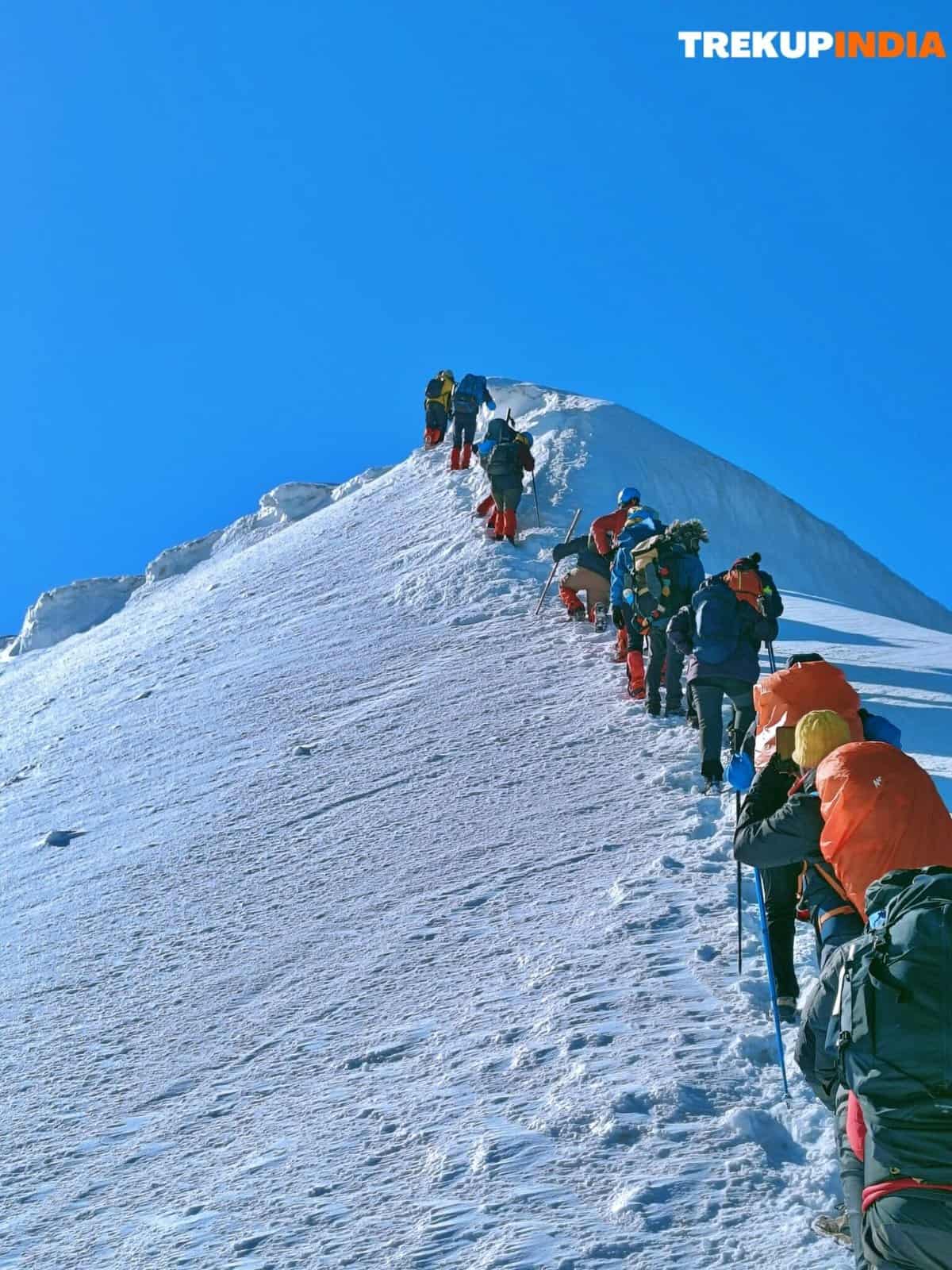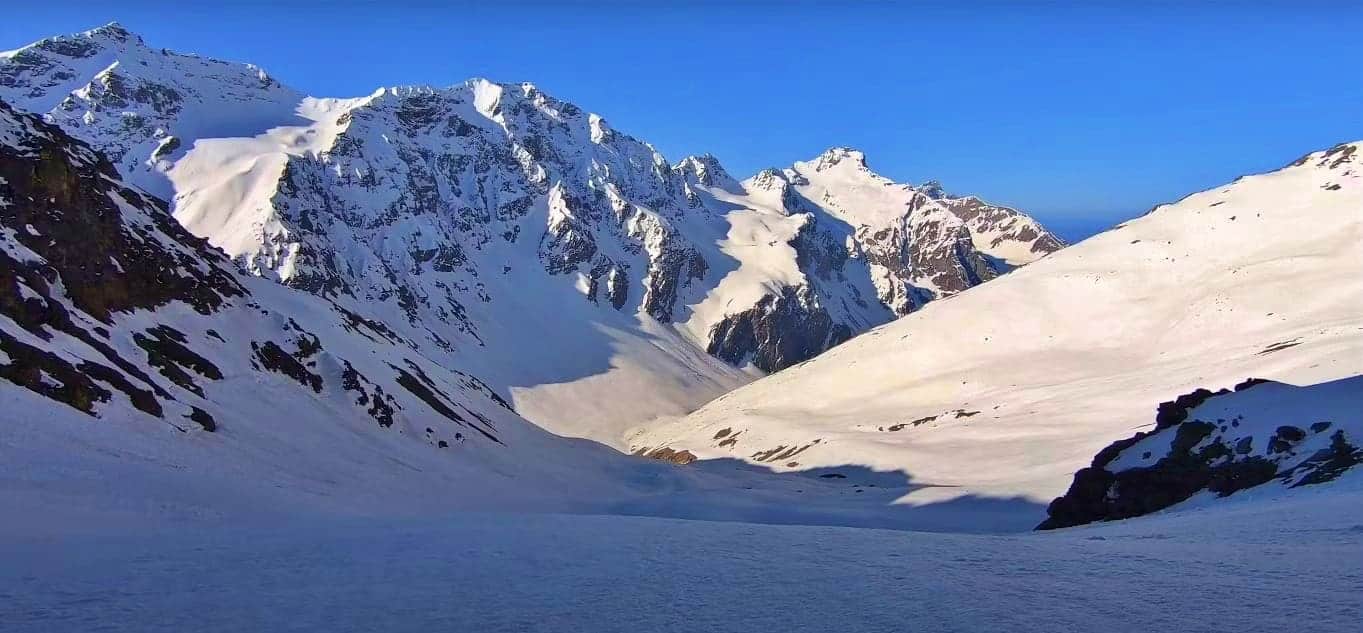Trek Grade
Difficult
Highest Altitude
15,000 ft
Base Camp
Uttarey
Best Time
April, May & Oct, Nov
Dafeybhir Pass Trek
Dafeybhir Pass Trek, also known as Danphebir La or Dafeybhir La, is an incredibly beautiful pass located in Sikkim, a state in northeastern India. The pass stands tall at around 15,000 feet and is renowned for its stunning panoramic views of the Sleeping Buddha range, which includes the majestic Mt Kanchenjunga and its neighboring peaks. The name of the pass translates to ‘Mountain of the Himalayan Monals’, referring to the beautiful pheasants that are found in the region.
The trek through Dafeybhir Pass offers an unforgettable experience, with breathtaking landscape views at every turn. The trek route takes you through a diverse range of natural habitats, including scenic forests of Rhododendron, Fir, Oak, and Bamboo. You’ll also encounter exhilarating ridge hikes, meandering rivers, challenging paths, demanding uphill and downhill sections, and breathtaking alpine lakes at high altitudes.
The trek through Dafeybhir Pass is not for the faint-hearted, as it presents its fair share of challenges. The terrain is rugged and varied, with rocky and boulder-strewn paths that require a high degree of fitness and skill to navigate. Additionally, the campsites along the route are often exposed to the elements, with no tree protection for most of the trek, and water sources can be scarce for several days. It’s best suited for highly fit, seasoned trekkers accustomed to the rigors of high-altitude trekking.
The allure of this trek extends beyond its primary attractions, as the entire experience is filled with challenges and excitement. The location is a significant factor, as trekking in Sikkim offers a distinct charm that sets it apart from other regions. Boasting a diverse landscape, an abundance of natural riches, and a rich cultural heritage, Sikkim promises to captivate from the moment you step foot inside its borders.
Overall, the Dafeybhir Pass trek is an unforgettable experience that offers diverse experiences, from scenic forests to panoramic mountain vistas. However, it is essential to be well-prepared and physically fit to tackle the challenges of trekking at high altitudes.
Trek Cost
- Stay will be on a twin-sharing basis in tents
- + 280 Trek Insurance (Mandatory)
- Transport Optional ( 2400 extra for transport )
Pickup time 9 A.M from NJP
Fix Diparture Dates
Dafeybhir Pass Trek Videos
Videos by experts watch these videos to prepare well for a Successful Trek

Want To Trek Like Pro?
Basically, watch these videos if you want to trek the same way professional trekkers do and make your skills better. These videos contain useful tips and techniques to further improve your trekking skills itself. These videos actually help both new and experienced trekkers improve their trekking skills. These videos definitely provide useful tips that make your trek better. We are seeing that these videos by Trekup India experts will only help you make your trekking skills better.
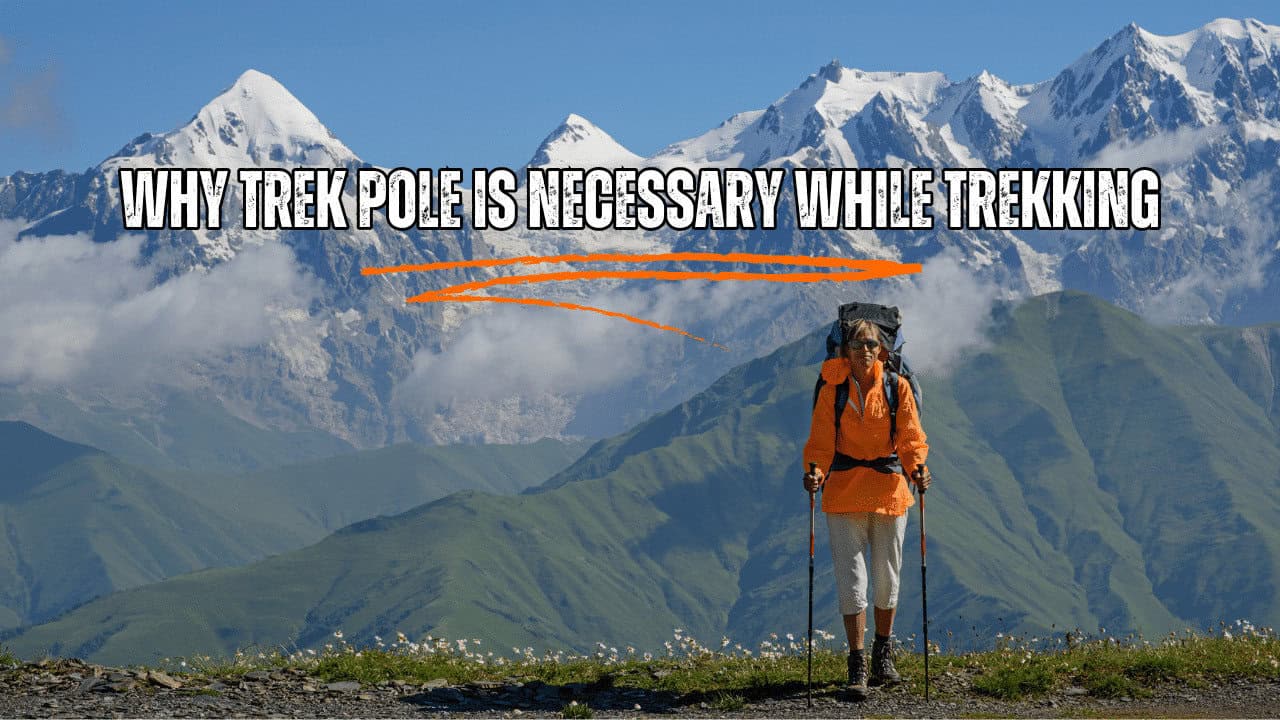
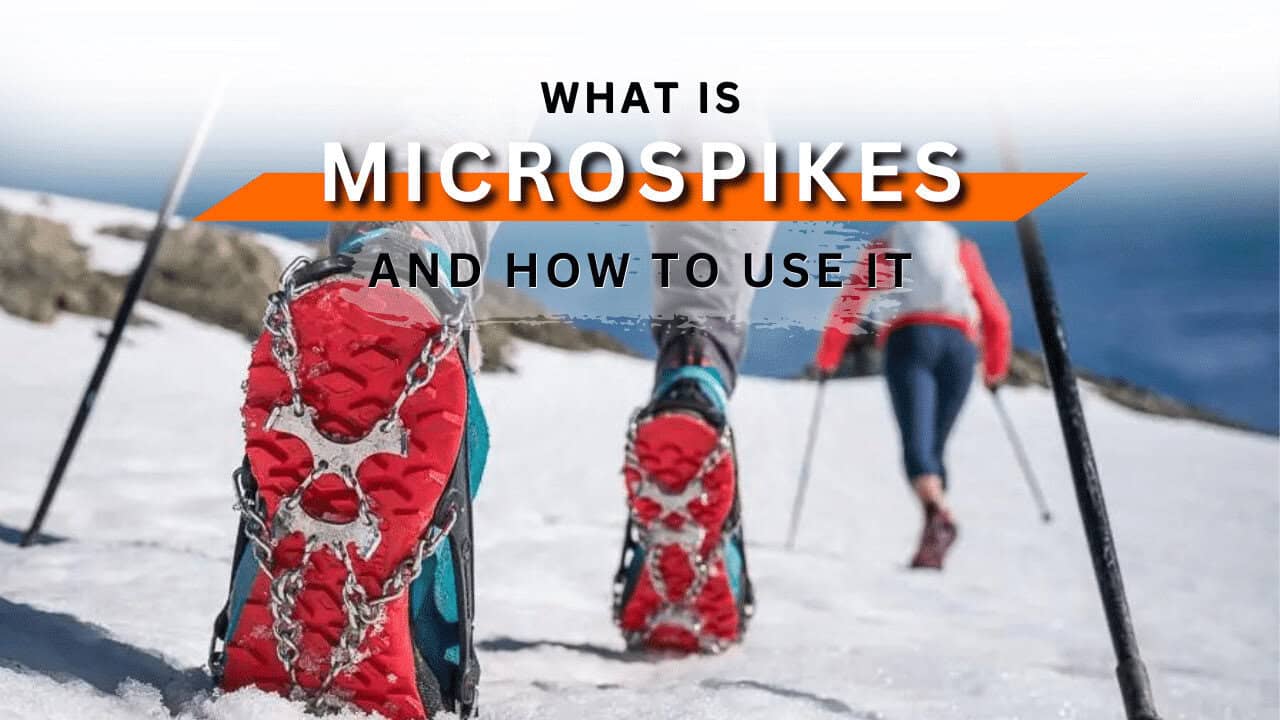
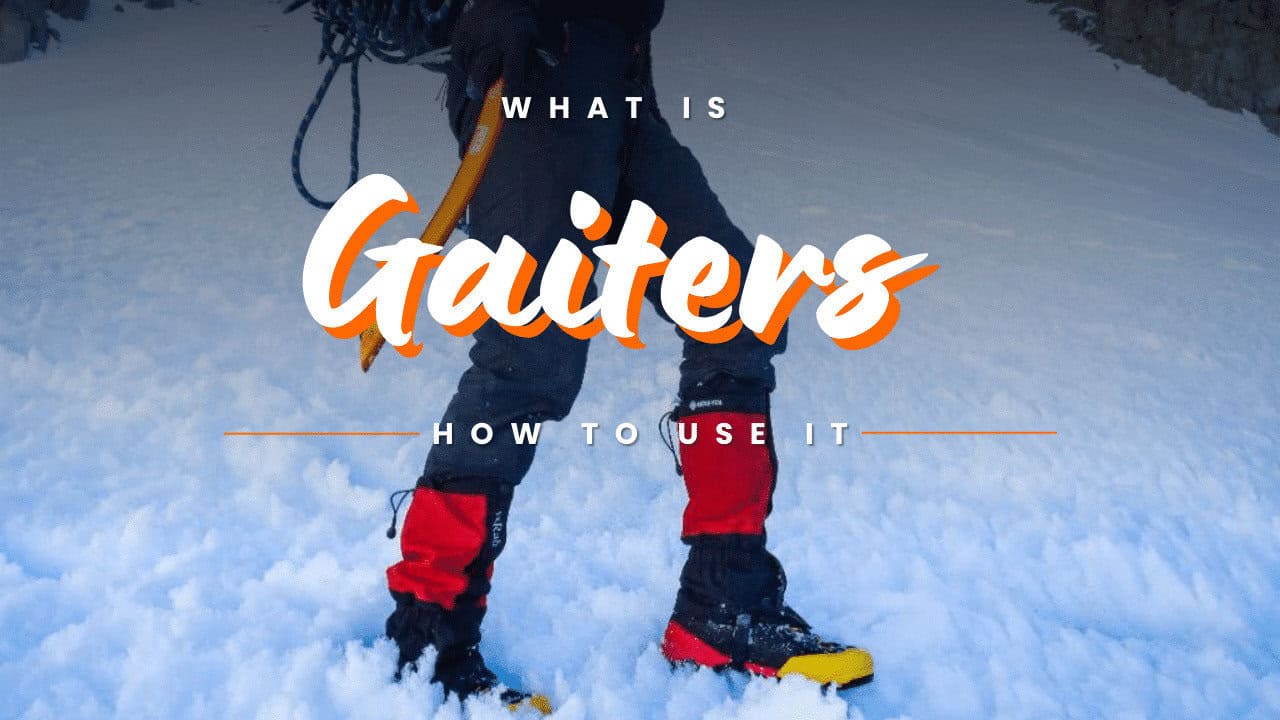
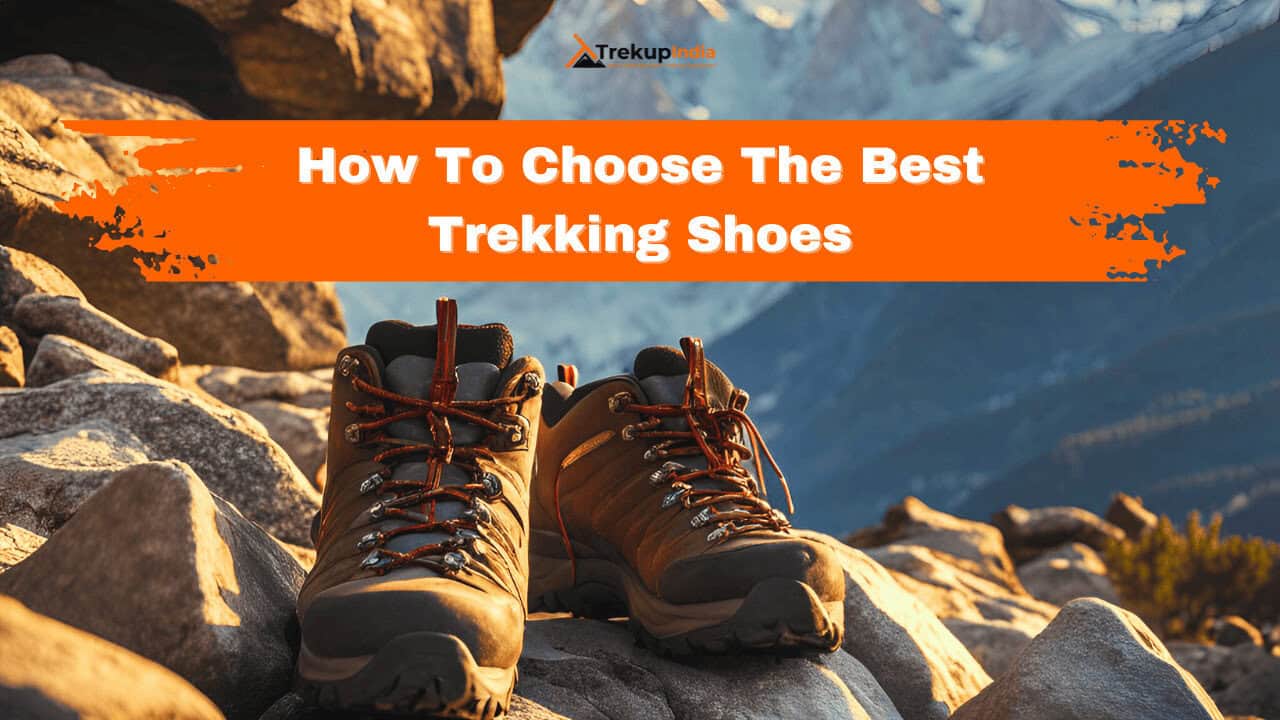
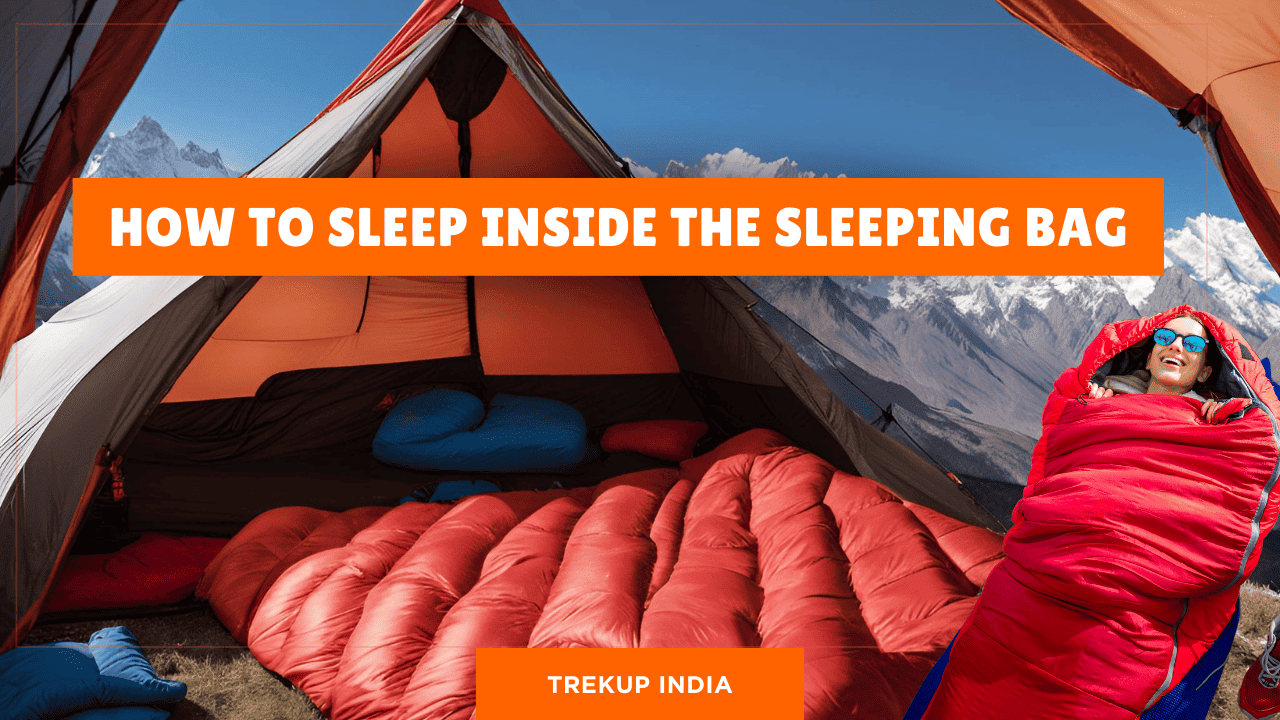
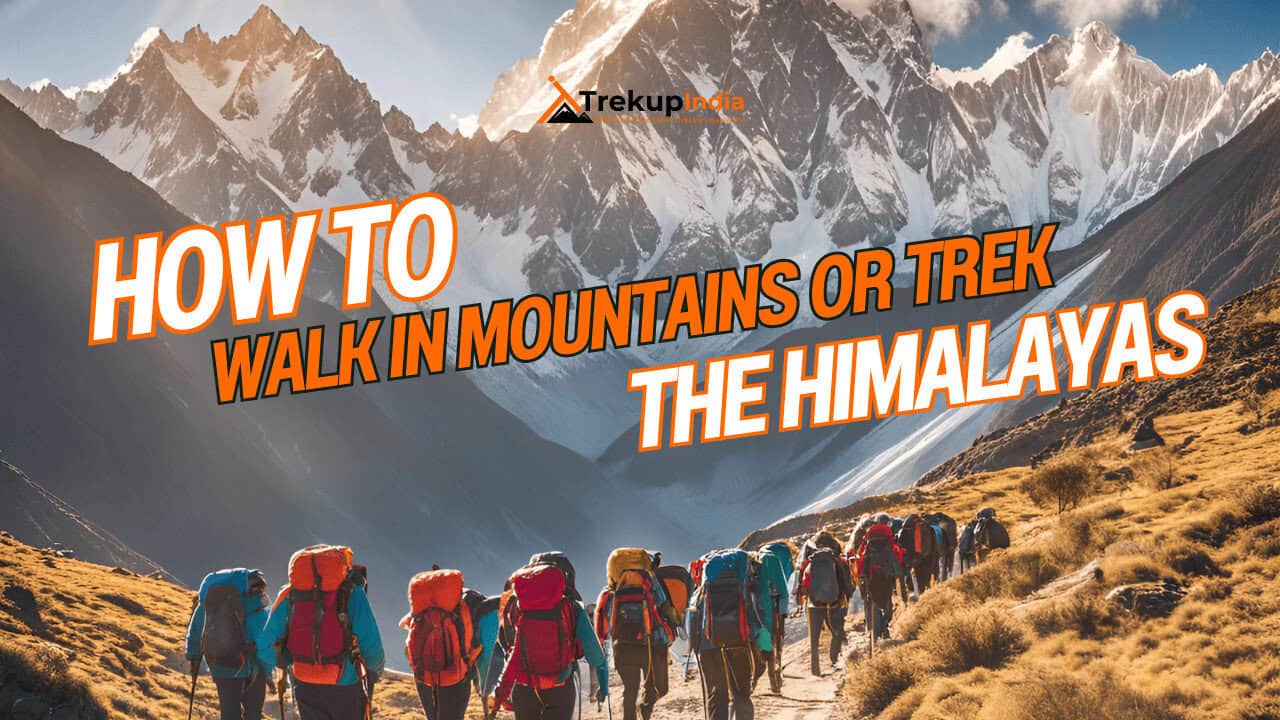
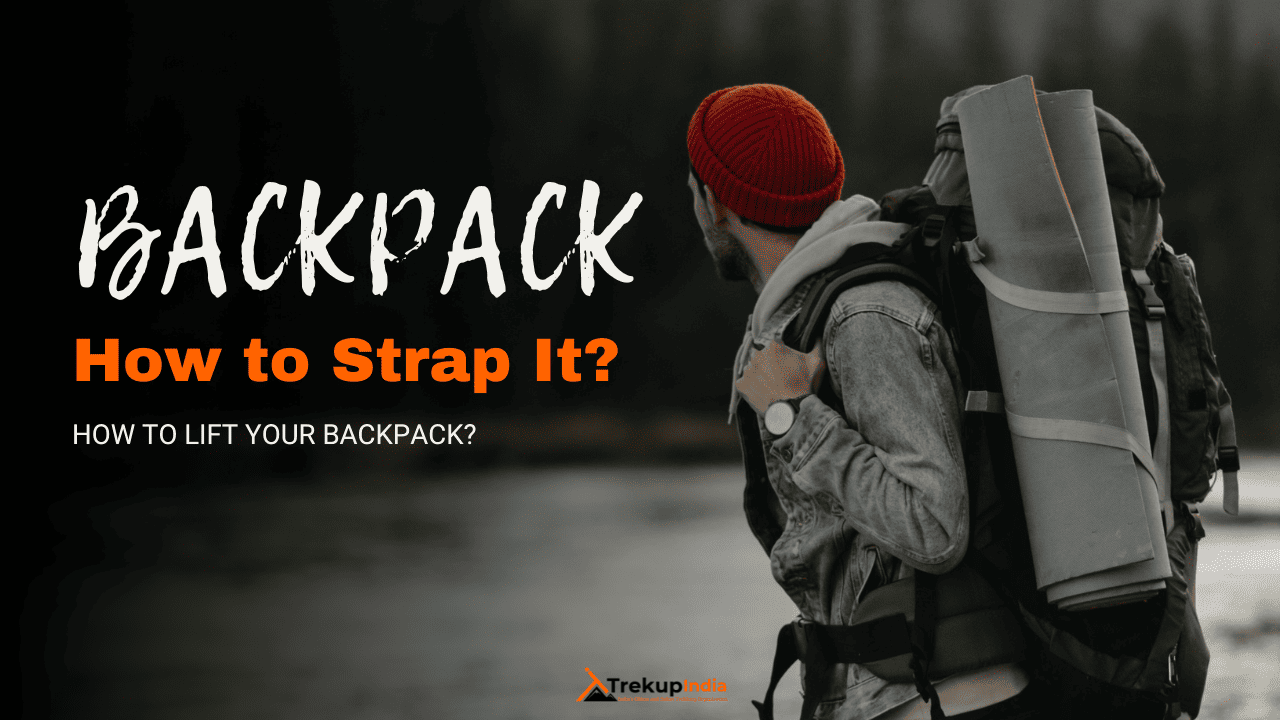
Know Everything About Acute Mountain Sickness
Acute Mountain Sickness occurs when people trek to high altitudes above 8,000 feet. This condition itself develops further due to reduced oxygen levels at such heights. Basically, as you go higher up, the air pressure and oxygen levels decrease, which causes the same problem. Acute Mountain Sickness surely causes headache, nausea, vomiting, and dizziness in affected persons. Moreover, peoples also experience difficulty in sleeping during this condition. To avoid mountain sickness, you should actually trek up slowly to higher altitudes. To learn further about this condition itself, watch the videos by Trekup India.
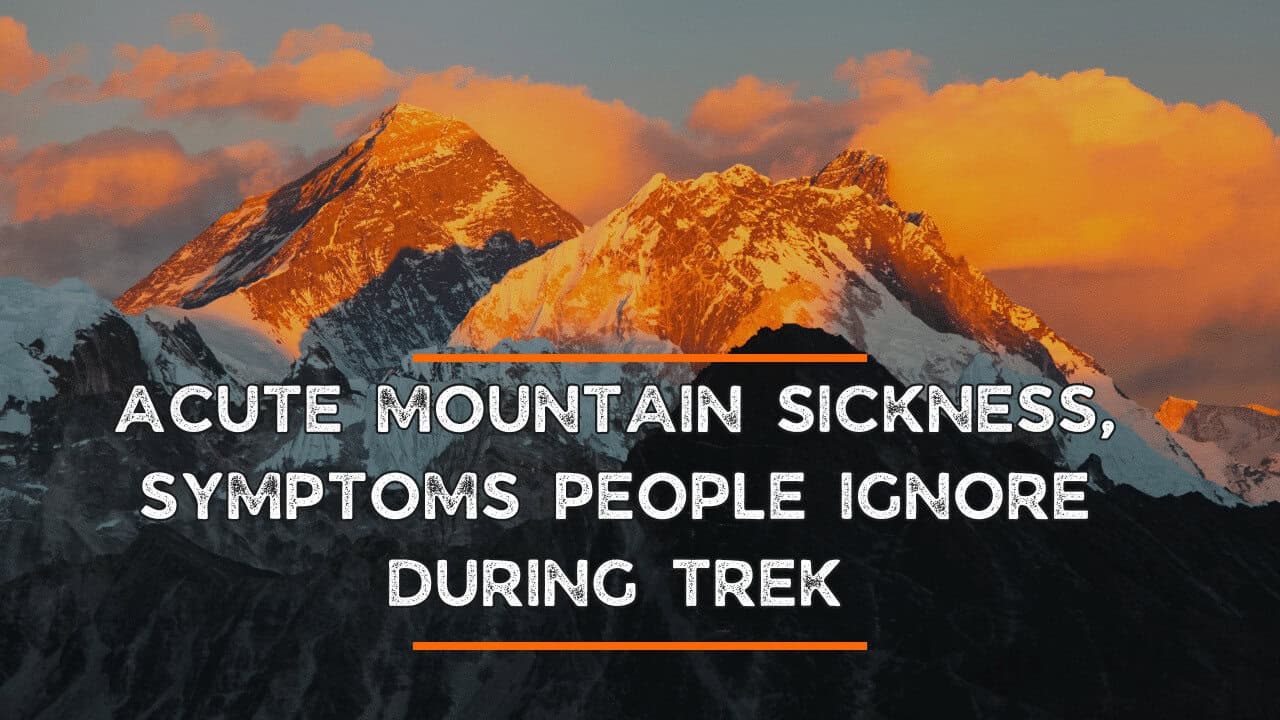
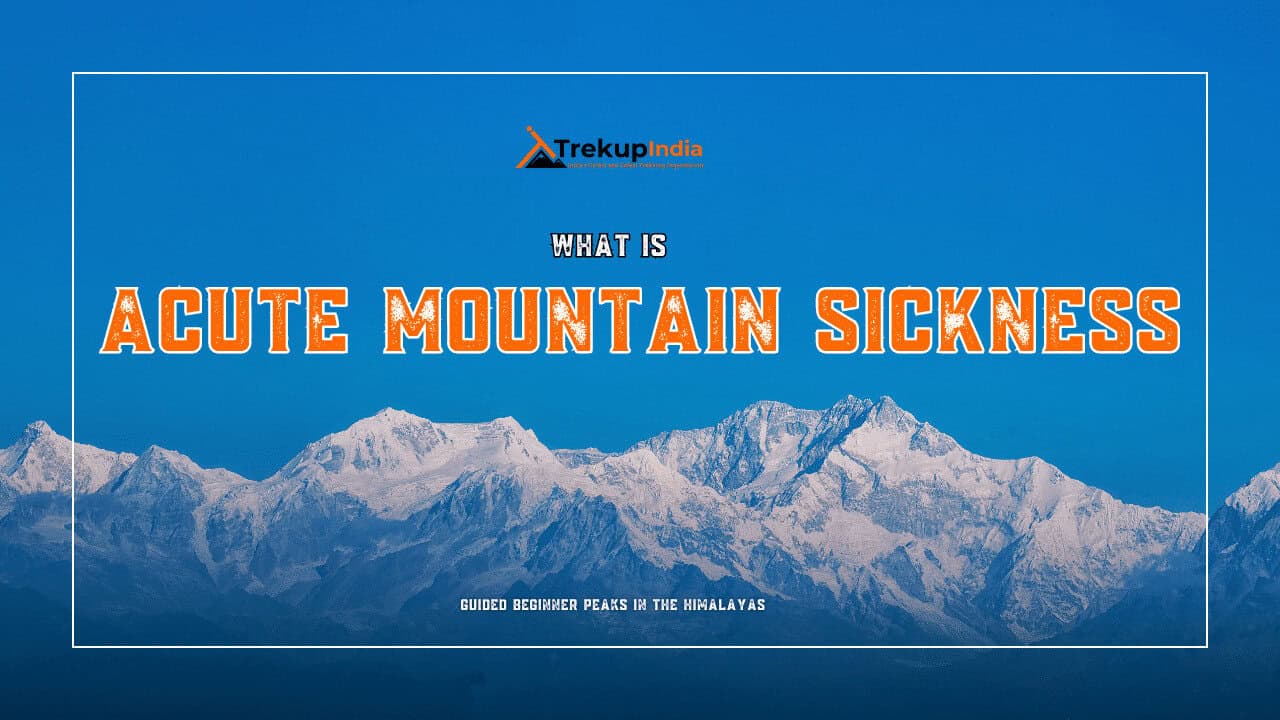
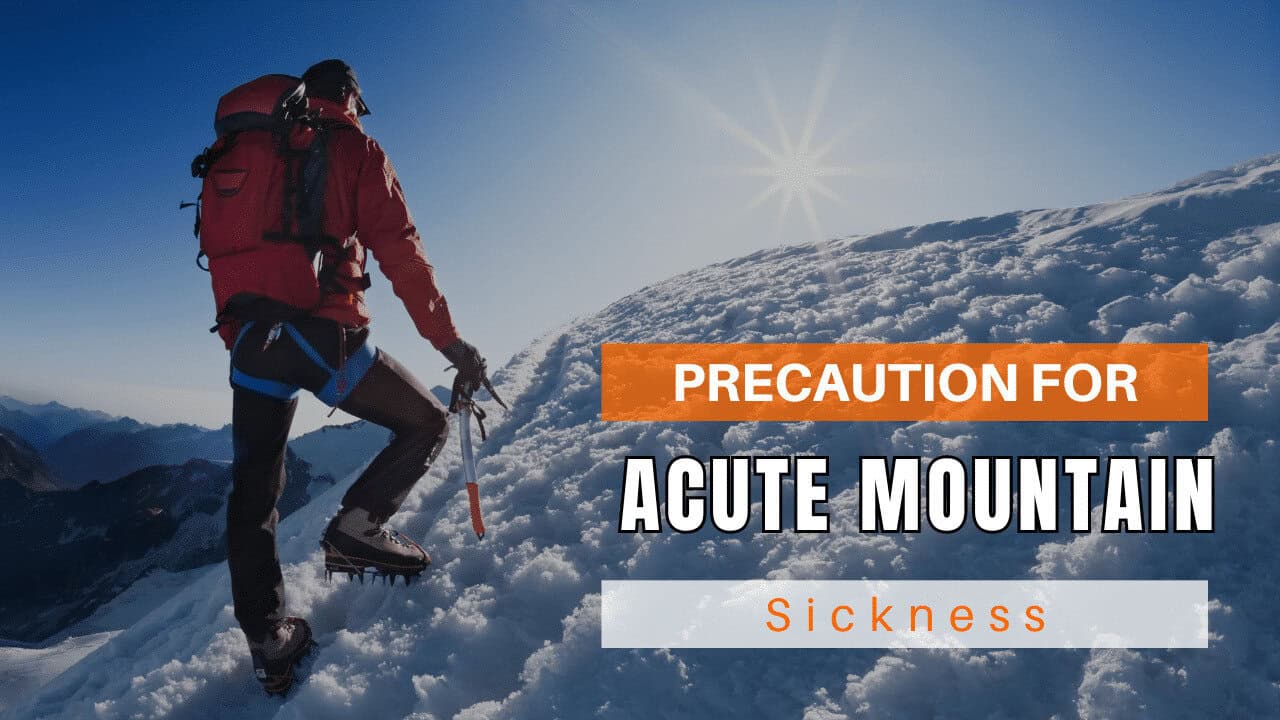
Day Wise Detailed Itinerary of Dafeybhir Pass Trek
Day 1: Drive from New Jalpaiguri/Bagdogra to Uttarey
- Travel distance: 170 kms
- Travel Time: approx. 8 hours
- Pick up Location: NJP
- Pickup Time will be 9.00 AM.
- Lunch on the way (not included with trek fee)
On Day 1, during the pick-up, you will embark on a 7-8 hour journey covering a distance of 170 km from New Jalpaiguri/Bagdogra to Uttarey. The route provides a quintessential hill station experience and begins with a scenic entry into the Sevoke forest. The forest consists of a flat terrain flanked by trees for several kilometres.
Exiting the busy city roads, you will experience fresh mountain air. The roads meander through picturesque landscapes along the Teesta and Rangeet rivers, well-known in West Bengal and Sikkim. You will witness the confluence of these rivers at Melli Check Post, marking the border of the two states. As you continue your journey, you will pass through charming hillside villages. The views from your vehicle as you ascend are breathtaking.
After crossing Melli Check Post and entering Sikkim, you will enjoy a delicious lunch featuring local specialities such as momos (dumplings), thukpa (noodle soup), time bread, and thud. These dishes will tantalize your taste buds and leave you wanting more.
Later, you will pass through two picturesque cities in Sikkim, Geyzing and Pelling, known for their monasteries and delicious cuisine. Take a brief stroll and stock up on supplies, but take your time as you’ll return to one of these cities upon completing your trek. The cities offer a perfect blend of urban and rural experiences and will leave a lasting impression on you.
Day 2: Chittrey Trek from Uttarey
- Trekking time: approx 6 hours
- Uttarey Altitude: 8,670 feet
- Overnight stay in tents on twin sharing
- Meals: B/L/D
Embarking on a 6-hour trek from Uttarey to Chittrey is an adventurous experience that will amaze you. The journey takes you through dense rhododendron forests, with a gradual ascent and a steeper incline towards the end. During the trek, you will follow alongside the Sapa Khola stream, which adds to the beauty of the trail. The path will take you through the Barsey Rhododendron Sanctuary, a protected area home to diverse flora and fauna. The sanctuary offers a picturesque atmosphere, with the scent of rhododendrons filling the air and birds chirping, providing soothing background music.
As you trek, you will cross improvised wooden bridges a few times as you cross the Sapa Khola and various small streams. The bridges offer a thrilling experience, and the sound of the streams flowing beneath them adds to the ambience. The final part of the journey involves a challenging climb to reach Chittrey, a quaint village located at an altitude of 8,500 feet. Snow-capped mountains surround the village, and the view from the top is breathtaking.
Once you reach Chittrey, you can pitch your tent near the campsite and bask in the beauty of the place. The village offers a serene environment, with fresh air and a peaceful atmosphere. The locals are friendly and hospitable, and you can learn about their culture and traditions while you stay here. The trek from Uttarey to Chittrey is a perfect blend of adventure, nature, and culture and is a must-do for anyone who loves trekking.
Day 3: Trekking from Chittrey to Gairi
- Trekking time: approx 8 hours
- Gairi Altitude: 11,410 feet
- Overnight stay in tents on twin-sharing
- Meals: B/L/D
On the third day of your journey from Chittrey to Gairi, you will encounter a challenging 8-hour climb that demands great physical endurance and stamina. The climb involves gaining an altitude of 2,740 feet, and it is essential to be well-prepared to complete it successfully.
The first 2.5 kilometres of the climb will take you through thick, lush forests of oak, rhododendron, and bamboo, making for a beautiful yet steep ascent of 3,000 feet. You will have to overcome several obstacles, including rocky terrain, slippery slopes, and tricky footing, so it is crucial to be cautious and take your time.
It would help if you replenished your water supply at Chewabhanjang, the last water source before the climb’s summit. Once you leave Chewabhanjang, there is no water source beyond that point, so make sure to carry enough water for the remainder of the climb.
After Chewabhanjang, you will traverse through forests once more before reaching a ridge that offers a breathtaking panoramic view of the surrounding hills, valleys, and mountains. The climb to the ridge’s summit is challenging, but the view from the top is well worth the effort.
Finally, it is essential to refill your water bottles at Chewabhanjang before leaving the forested area, as water availability is limited once you reach the ridge’s summit. Keep yourself hydrated throughout the climb to avoid dehydration, fatigue, and other health concerns that may arise due to the strenuous physical activity.
Day 4: Trek from Gairi to Dhoor
- Trekking time: approx 5 hours
- Dhoor Altitude: 12,300 feet
- Overnight stay in tents on twin-sharing
- Meals: B/L/D
The trail you’ll take is relatively easy and can be completed in around 5 hours. However, there is an elevation gain of 890 feet, so it’s best to be prepared for the climb. No water sources are nearby, so you may need to adjust your route to reach the closest water source. Please exercise caution when walking on snow, as it can be slippery and potentially dangerous.
The trail continues for approximately 4 kilometres, leading you to your campsite for the day, Dhoor. Once you arrive, you’ll find a shepherd’s hut slightly to the ridge’s left. This can be a great spot to take a break, rest, and enjoy the stunning views. Just stay safe and aware of your surroundings, especially if you’re unfamiliar with the area.
Day 5: Trekking from Dhoor to Pahadimegu
- Trekking time: approx 6 hours
- Pahadimegu Altitude: 12,645 feet
- Overnight stay in tents on twin-sharing
- Meals: B/L/D
On the fifth day of your trek, you will embark on a moderately challenging journey from Dhoor to Pahadimegu. This hike will take you approximately 6 hours to complete as you ascend 345 feet gain. The path will lead you through a ridge that will take you to Pahadimegu, where you can access fresh water from the spring. However, be careful of icy patches along the way and avoid them at all costs. The entire trek is expected to last between 6 to 7 hours, so make sure to pack enough water and snacks to keep you energized throughout the journey. Also, don’t forget to refill your water supply from the nearby stream and keep yourself warm in your tent before sunset.
Day 6: Trek from Pahadimegu to Lampokhri
- Trekking time: approx 8 hours
- Lampokhri Altitude: 14,205 feet
- Overnight stay in tents on twin-sharing
- Meals: B/L/D
The trek for today will require a total of 8 hours to complete and entails an altitude change of 1,560 feet, starting from an elevation of 12,645 feet and reaching a peak of 14,205 feet. The challenge level for this trek is moderate to difficult and requires a certain level of physical fitness.
The trek will take you through a beautiful valley, and will take you across the border into Nepal. After about 5 kilometres, you will ascend to a height of 2,000 feet and will be above the tree line, providing an unobstructed view of the surrounding landscape.
During the trek, you will find water sources at Lampokhri Lake and a few other small lakes. As the day progresses, you will reach the shores of Lampokhri Lake, where you can set up your tents for a memorable night under the stars. However, be prepared for freezing temperatures and icy winds from all directions, as the lake is located at a high altitude.
Day 7: Trek from Lampokhri to Dafeybhir Pass via Lakshmi Pokhri and Zumley Pokhri; back to Lampokhri
- Trekking time: approx 11-12 hours
- Dafeybhir Altitude: 15,000 feet
- Meals: B/L/d
- Stay on twin sharing basis in tents.
As you begin day 7 of your trekking adventure, you’ll be embarking on a thrilling 12-hour journey from Lampokhri to Dafeybhir Pass. This segment will take you through the picturesque Lakshmi Pokhri and Zumley Pokhri, and you’ll be gaining and losing altitude throughout the trek, with an elevation range of 14,205 feet to 15,000 feet before returning to 14,205 feet. The terrain is challenging, with multiple ascents and descents, which has earned this segment a difficult rating. However, the stunning scenery of the lakes near Dafeybhir Pass will be well worth the effort.
To ensure you stay hydrated, don’t forget to refill your water bottles from the various water sources along the way. This will be a tiring but rewarding day, so make sure you are prepared and ready to go. Your campsite will still be at Lampokhri, so there is no need to unpitch your tents. It’s recommended that you start your journey early at 4:30 AM to allow ample time to reach Dafeybhir Pass for a breathtaking sunrise.
After a long day of trekking, you can take a well-deserved rest, as you’ll be descending to Naya Pataal the following day. So, get ready to explore the natural beauty of the region and make the most of your trekking adventure.
Day 8: Trek from Lampokhri to Naya Pataal
- Trekking time: approx 7 hours
- Naya Pataal: 8,155 feet
- Meals: B/L/D
- Stay: in tents on twing sharing
On Day 8 of the trek, you will face a challenging route from Lampokhri to Naya Pataal, which will last about 7 hours. The trek involves a significant descent of 6,050 ft in altitude over a distance of 9.5 km. Therefore, it is advisable to proceed slowly and take plenty of breaks to avoid any altitude sickness or fatigue. You must be prepared to face the challenge and take it slow and steady to complete the trek without any issues.
Before you start the trek, make sure to refill your water bottles at Lampokhri, as water sources will be limited until you reach Naya Pataal. It is important to stay hydrated throughout the trek to avoid any health issues. Additionally, be mindful of your surroundings and try to keep the environment clean and tidy.
The trek initially includes a 5 km ridge walk, which will offer you some breathtaking views of the surrounding mountains and valleys. After that, you will enter the forests for the first time in three days. The trail is narrow and winding, so you need to be careful while walking. The final stretch of the trek involves a steep 4 km descent through the forest to reach Naya Pataal. It is essential to wear sturdy shoes with good grip to avoid any slips or falls.
With these precautions in mind, you will be able to complete the trek safely and enjoy the beauty of nature along the way.
Day 9: Trek from Naya Pataal to Senkhola
- Trekking time: approx 5 hours
- Senkhola Altitude: 5,560 feet
- Meals: B/L/D
On the ninth day of your trek, you’ll embark on a moderately challenging journey from Naya Pataal to Senkhola. This trail takes around 5 hours to complete and spans 5 kilometres. As you descend through the rolling hills, you’ll pass through dense forests of Rhododendron, Silver Fir, and Bamboo, offering you a breathtaking landscape view.
You’ll have the Senkhola River as your water source throughout the journey, providing fresh and pure water to quench your thirst. While traversing the trail, you’ll also come across several makeshift bridges, adding an element of adventure to your journey. These bridges can be quite precarious, but they are safe if you exercise caution while crossing them.
After traversing the 5-kilometer trail, you will arrive at Senkhola in about 2 hours. Here, you will have the opportunity to rest and recharge at a cosy homestay. It will be the perfect place to unwind, relax, and enjoy the beautiful surroundings after trekking.
It is important to note that no transportation is available after 8:00 AM, so you should plan accordingly. Make sure you start your journey early to avoid any inconvenience. With careful planning, you’ll be able to make the most of your trek and enjoy the region’s stunning beauty to the fullest.
Day 10: Drive to Pelling/Geyzing back from Senkhola
- Driving time: approx 7 hours
- Meals: Tea, Coffee & biscut
- Driving road distance: 155 km
When planning to travel from Senkhola to Pelling or Geyzing, a shared taxi is a convenient option. The journey covers a distance of about 155 km and usually takes around 6-7 hours. You must be at Senkhola by 8:00 AM to catch the shared taxi. The cost of the shared taxi is reasonable at Rs.150 per person up to Geyzing.
On the other hand, if you have plans to trek with Trekup India, you can avail of our drop-off service at Bagdogra Airport or NJP railway station. This service is particularly useful if you’re carrying heavy backpacks and want to avoid the hassle of looking for transportation upon arrival. Planning your journey in advance is always good to ensure a comfortable and hassle-free travel experience.
Dafeybhir Pass Trek Route Map
We’ve prepared a comprehensive Trek Route Map for your upcoming adventure to Dafeybhir Pass Trek, which outlines the entire journey including all stops and trails. This map provides detailed information on the terrain, distance between points of interest, and estimated travel time to help ensure a safe and enjoyable trek. We’ve carefully curated the map to ensure that you have all the necessary information at your fingertips. Please take a moment to review it thoroughly, and don’t hesitate to reach out if you have any questions or concerns.
Dafeybhir Pass Trek Altitude Chart
The Trek Altitude Chart is a useful tool for Trekkers to monitor their altitude changes during their rides, allowing them to plan their routes more efficiently and track their progress over time. This Dafeybhir Pass Trek chart is beneficial for both casual and experienced Trekkers, helping them make the most out of their Trek experience.
Trek Cost Inclusions
- Stay: 8 Nights in tented accommodation at respective campsites of Trekup India on a twin sharing and 1 night in guest house.
- Meals: Trekup India provided cooked meals during the trek starting with Dinner on Day 01 to tea, coffee & biscut on day 09 (Meals are simple, nutritious and vegetarian and non-repeated meals)
- Transport (Optional): From NJP to Uttarey and return from Senkhola. ( 2,400 extra )
- Trek Insurance (Optional): Trekup India recommends that all trekkers consider getting trek insurance. This is optional, but highly recommended. Trek insurance covers unexpected events that may occur during your trek. The cost of the insurance starts from INR 210. Please read more about what is included in the coverage and why it is mandatory on treks.
- Trek Equipment: Sleeping bag, Sleeping tents, Kitchen tent, Dining tent, Toilet Tent.
- Amenities: All utensils, sleeping mattresses (Black foam mats), Crampons, and Gaiters for snow.
- Health & Safety: First Aid Box, Oxygen Cylinders, Stretchers, Oxi meters, BP Machines, health.
- Permits: Forest Permits and Camping Permission Fee
- Trek Crew: High Altitude Chef, Helpers, Trek Leader & Guides, and other support teams.
- Potters & Mules: Potters and Mules are to carry all trekking equipment, ration, and vegetables.
Trek Cost Exclusions
- GST 5% (it is Mandatory)
- Any Meals/accommodation beside the itinerary or not mentioned in the program.
- Any Bus / Airfare to/from trek start/end point
- Personal Medical expenses do carry your medication.
- Any personal services such as Laundry, phone calls, liquors, mineral water, etc.
- Any still / video camera fee
- Any Entrance fee Monuments, Monasteries, Museums, Temples – Pay directly on the spot.
- Mules or porter charges to carry private baggage (Offload Charges for bag 365 per day, per bag if paid online (at base camp 2,550). Note: Bag weight should not be more than 10 kg.
- Any emergency evacuation charges
- Any services that are not mentioned in the cost inclusion section.
What should you pack for the Dafeybhir Pass Trek
Dafeybhir Pass Trek is a high-altitude trek. The trekking gear you have to have for this particular trek differs from normal treks. Thus, read this whole segment. There is an important question that the trekker who is doing trek asks, like what all things to carry while trekking. Below, we have provided the details on everything you should take; an easy way to remember is by Head to foot or foot to head. We have prepared from Head to foot.
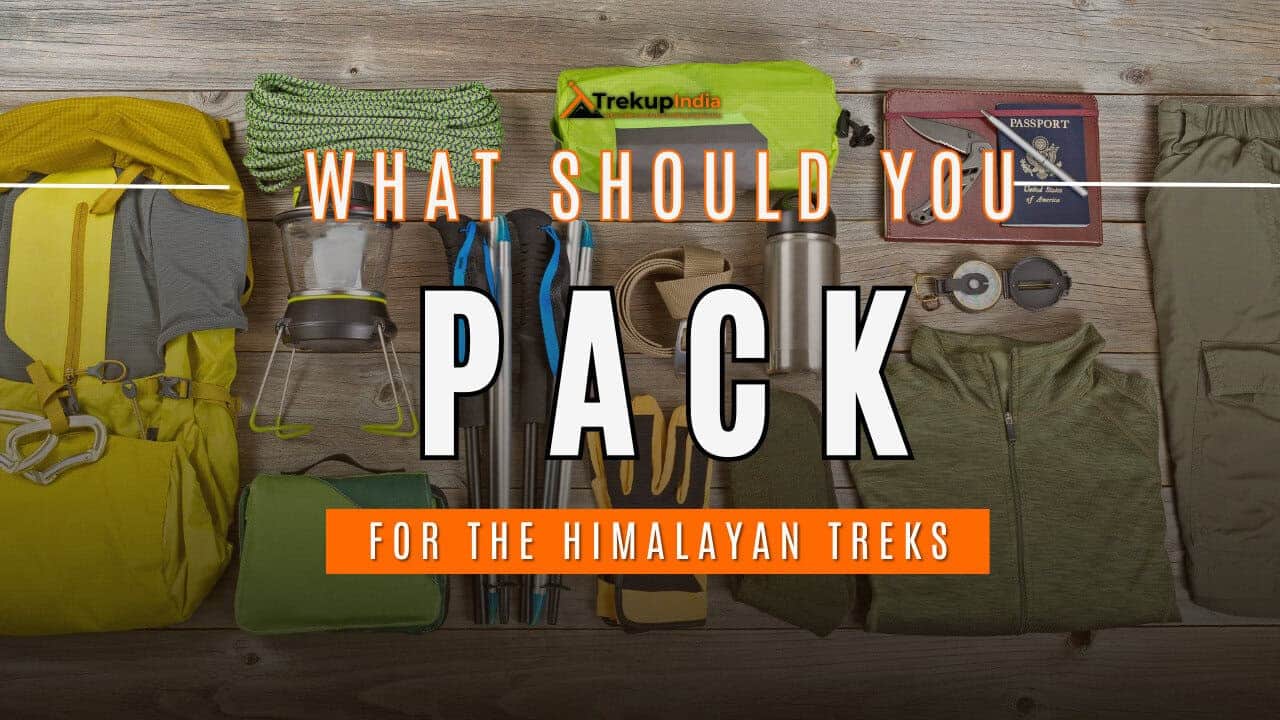
Head Gears
When trekking it's important to carry headgear to protect your head and face.
Heading out for a trek? Don’t forget to carry headgear to protect your beautiful face and head from the sun, wind, and dust! It’s an essential accessory that keeps you safe and comfortable throughout your adventurous journey. So, make sure you pack it before you step out into nature!
- Head Lamps – When trekking at night, headlamps are essential to illuminate your path while keeping your hands free. Headlamps come in different sizes and lumens, so it is essential to choose one that suits your needs.
- Hats or Cap – Caps or hats are also necessary when trekking in different weather conditions. Caps protect your head from the wind and freezing temperatures at night, while hats provide shade and protection from the sun during the day. It’s essential to ensure that your hat has a strap to prevent it from being blown away by the wind.
- Sunglasses – Sunglasses are also essential for trekking. Your sunglasses should protect your eyes from harmful UV rays and fit your face perfectly to avoid falling off while climbing, jumping, or crossing obstacles. The glass of your sunglasses should also be designed for different weather conditions to provide optimal visibility.
- Buff / Balaclava – Lastly, a buff or balaclava is a must-have to protect your mouth or neck from extreme temperatures and keep them warm. Buffs and balaclavas come in different materials, thicknesses, and designs, so it’s important to choose one that suits your needs and preferences. Depending on the weather conditions and your activities, you can wear them as neck warmers, face masks, or headbands.
Clothes
When trekking in high altitudes, prepare for cold weather by wearing layers. Layering traps heat, keeps you warm, and allows you to easily adjust your clothing as temperatures fluctuate.
Layering is important for different seasons when trekking. When planning a high-altitude trek, it is important to prepare for the cold weather. Wearing layers is the best approach as it provides both protection and flexibility when the weather changes frequently in the mountains. Layering helps to trap heat and keep your body warm, while at the same time allowing you to easily adjust your clothing as the temperature fluctuates. By wearing layers, you can enjoy your trek comfortably and stay safe in the unpredictable mountain weather
- For spring, summer, and monsoon treks, consider wearing three layers: a woollen sweater, a fleece, and a padded jacket.
- For autumn treks, add one more fleece layer to make it four layers.
- For winter treks, you may need five layers with thermals, a woollen sweater, two fleeces, and a padded jacket.
- T-shirt/sleeve shirt– Bring three T-shirts and two quick-dry trek pants, wearing one and carrying the others. Long sleeve shirts help to protect from sun UV rays. We recommend synthetic T-shirts as they get dry quickly when they get wet.
- Hiking / Trekking Jacket– down jackets (-5 to-10 C) or two-three-layer jackets.
- Thermals– at least two pairs of thermals help keep the body warm during cold weather.
- Undergarments– you can carry them according to your habitual and hygiene requirements.
- Gloves– 1 pair of gloves will keep your hand warm and nice.
- Trek Pants– Bring 2 to 3 comfortable trekking pants. Trekking pants play a significant role, as they are designed for comfort and mobility, making trekking easier. It should be Synthetic so that it gets dry quickly when wet.
- Rain Wear– you can carry a raincoat or Poncho. During long rains and snowfalls, the waterproof jackets start leaking. Still, the Poncho and raincoats keep you dry, so choose accordingly.
Tip: If you choose a raincoat on your trek, carry a small waterproof cover so things inside your backpack can’t get wet. If you carry a Poncho, you don’t need to worry. It protects both you and your backpack.
Foot Gears
When it comes to planning a trek, one of the most important aspects is to ensure that you have the right kind of foot gear.
- Trekking shoes which are waterproof and have ankle support. Walking / Hiking sandals which can be used off the trek, i.e., in the morning and evening hours when you reach the campsite, basically to get your feet rest from heavy boots, sometimes used for crossing streams and rivers, it’s more comfortable and safer than crossing barefoot or wetting your shoes. Sneakers (Optional) can be worn for normal driving days or used around the camp.
- Socks– you should at least carry 3 to 4 pairs.
- Microspikes & Gaitorswill be provided by Trekup India when required. You don’t have to carry them.
Personal First Aid Kit
Don't forget to pack your personal first aid kit! It's always better to be safe. So, make sure you're prepared for any unforeseen circumstances.
Below are some common medicines generally required/used during your adventure trip; however, please consult your doctors prior.
- Antiseptic towel or water syringe (to clean the wound)
- Butterfly bandage for a small cut
- Cotton and elastic bandages and sterile gauze pad for larger wounds
- Latex gloves are used when the wound bleeds.
- Medicine for Diarrhea (Upset stomach)
- Medicine for cold, flue/fever, headache
- Some pain killers
- ORS pouches
- Quick pain relief spray (External use)
- Any personal medicine prescribed by your doctor
- Dimox / Similar for high altitude sickness
- Bug Repellent
- Carry some nutria/energy bars and drinks (non-alcoholic)
- Note: Kindly consult your doctor before purchasing or taking any medicine.
Gadgets and Other Items
You might also consider bringing a camera, binoculars, portable charger, and snacks. Be well-prepared and tackle any trail with confidence.
- Trekking Poles
- Mobile phone
- Camera
- Spare batteries for phone and camera, power bank
- Lightweight flashlight or headlight
- A waterproof bag made of plastic is used for the camera.
- Plug/converter for electrical items
- 1-litre water bottle
- A journal with a pen would be a good idea to keep your notes.
- Some book of your interest for the ideal time
- Get into the habit of maintaining a Map and guidebook of the region.
Hygiene & Personal toiletry
Remember to pack hygiene and personal toiletry items such as soap, shampoo, toothbrush, toothpaste, deodorant, and toilet paper.
- Sunscreen with UV protection to shield your skin from harmful rays
- 1 or 2 small quick-drying towels to help you dry off quickly in case of rain or sweat
- Toilet paper, tissues or wet wipes for maintaining hygiene while on the trek
- Toothbrush, toothpaste, and mouth freshener to keep your mouth clean and fresh throughout the journey
- Deodorant or talcum powder to help you stay fresh and odor-free, especially during hot and humid climates
- Shampoo to keep your hair clean and healthy
- Sanitary pads or tampons (for female trekkers) to manage menstrual cycles
- Lip-gloss or salve to protect your lips from dryness and chapping
- Bio-degradable soap to keep yourself clean and hygienic while on the trek
- Nail clipper and other personal items that you use daily
Compulsory Documents to Carry
There are certain documents that you should always carry with you. These documents are not only necessary for your safety and security, but they may also be required by local authorities.
These files must be submitted to the Forest Department before your trek. With none of these, you will not be permitted to trek—original and photocopy of government photo identity card. Carry IDs like Aadhaar, voter ID, etc.
How To Plan Your Trek & Reach New Jalpaiguri Junction (NJP)?
By Air: Bagdogra Airport is the nearest airport (if you plan to come by flight, our pickup point will be STNM Bus / Taxi Stand in Siliguri, which is approx. 20-25 Km from the airport, and it is advised to arrive either early morning or a day prior if planning by flight).
By Train: The Railway station is New Jalpaiguri (NJP) with great railway connectivity connections; if planning to arrive by train, then book your train till New Jalpaiguri Railway Station (NJP) and from there, take an auto/taxi to STNM Bus / Taxi Stand in Siliguri, which is approx. 30-35 Km from the airport, and it is advised to arrive either early morning or a day prior if planning by train as sometimes the trains are delayed).
Fitness Required & Preparation Guide For Dafeybhir Pass Trek
If you’re preparing for a Dafeybhir Pass Trek, Trekup India recommends jogging as part of your fitness routine. Jogging helps work out the same muscle groups that you’ll use during trekking and can help you build endurance. You don’t need any special equipment to get started.
Fitness Target
Trekup India has put the Dafeybhir Pass Trek into an difficult grade-level trek.
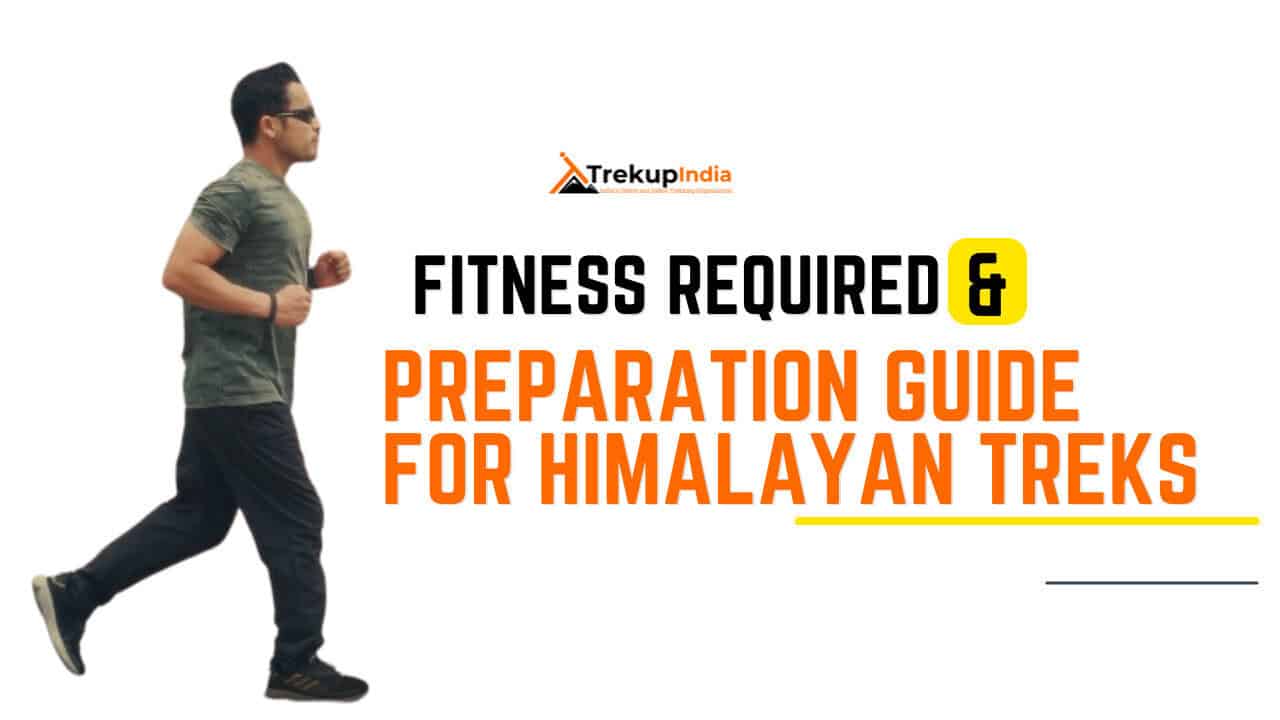
For Difficult Treks – In order to be well-prepared for your upcoming trek, it is recommended that you focus on building your endurance by aiming to cover a distance of 5.5 kilometers in less than 45 minutes. This will help you to develop the necessary stamina and strength required to successfully complete your journey.
How to Achieve This Fitness Target?
To start preparing for your trek:
- Try jogging for at least five days every week.
- If you find 5 km too difficult at first, begin with 2 km and gradually increase over 2-3 weeks.
- Once you feel more comfortable running 5 km, focus on improving your speed gradually on a daily basis.
It is important to ensure that you can consistently complete 4.5 km in under 40 minutes for at least two weeks before your planned trek. Allow yourself 6-8 weeks to prepare physically for the journey.
Strength Training exercises that benefit Trekking
Trekking is an activity that demands a good level of strength.

Trekking is a demanding activity that requires good cardiovascular endurance, muscular strength, and overall fitness. To help you prepare for your trek, incorporating bodyweight exercises into your training routine can be an effective way to build strength, improve stability, and enhance endurance, all of which are crucial for a successful trek. In this regard, here’s a breakdown of body weight exercises categorized by the specific body parts they target and the benefits they offer during trekking.
1. Lower Body Exercises
Lower body exercises like squats and lunges are great for building lower body strength, essential for trekking.
a. Squats
Squats are an excellent exercise for building lower body strength, essential for trekking. They target the quadriceps, hamstrings, glutes, and calves. Solid quadriceps and glutes provide power for ascending and tackling uphill climbs, while vital hamstrings aid stability during descents. This is particularly helpful in navigating uneven terrain during trekking.
How to perform Squats Exercises:
- Stand with feet shoulder-width apart, toes pointing slightly outward.
- Lower your body by bending your knees and hips, keeping your back straight.
- Lower until your thighs are parallel to the ground or as low as comfortable.
- Push through your heels to return to the starting position.
b. Lunges
Lunges target the quadriceps, hamstrings, glutes, and calves. They improve lower body strength, balance, and stability, crucial for maintaining control on rocky trails and steep slopes. Additionally, they enhance flexibility, reducing the risk of injury while trekking.
How to Perform Lunge Exercises:
- Stand with feet hip-width apart, hands on hips or sides.
- Take a step forward with one foot, lowering your body until both knees are bent at 90-degree angles.
- Push through the heel of your front foot to return to the starting position.
- Repeat on the other side, alternating legs.
2. Upper Body Exercises
Upper body exercises such as push-ups and pull-ups effectively strengthen the upper body, especially the chest and shoulders, which are essential for carrying a backpack during treks.
a. Push-Ups
Targets: Chest, shoulders, triceps, and core.
Benefits for Trekking: Push-ups are an effective exercise to strengthen the upper body, especially the chest and shoulders, essential for carrying a backpack during treks. Improved upper body strength will also help maintain posture and stability while traversing challenging terrain.
How to Perform Push-Ups Exercises:
- Start in a plank position with hands shoulder-width apart and body in a straight line from head to heels.
- Lower your body by bending your elbows until your chest nearly touches the ground.
- Push through your palms to return to the starting position.
- Keep your core engaged throughout the movement.
b. Pull-Ups/Bodyweight Rows:
Targeting the back, biceps, and shoulders can significantly benefit trekking. You can strengthen these muscle groups by performing pull-ups or bodyweight rows and improve your posture and balance while carrying a backpack. Additionally, more muscular back muscles can help reduce the risk of back strain and fatigue during long treks, making your journey safer and more comfortable.
3. Core Exercises
Core exercises like planks and Russian twists can help strengthen the core muscles, which are crucial for maintaining stability and balance while trekking on uneven terrain.
a. Planks
Targets: Abdominals, obliques, and lower back.
Benefits for Trekking: Planks are an effective exercise that helps strengthen the core muscles. These muscles are crucial for maintaining stability and balance while trekking on uneven terrain. A strong core also helps improve posture, reducing the risk of back pain and fatigue during extended hikes.
How to Perform Planks Exercises:
- Start in a plank position with elbows directly under shoulders and body in a straight line from head to heels.
- Engage your core and hold the position, avoiding sagging or arching the back.
- Keep breathing steadily and hold for the desired duration.
b. Russian Twists
Targets: Obliques, abdominals, and lower back.
Benefits for Trekking: Russian twists engage the core muscles, particularly the obliques, improving rotational stability and balance. Enhanced core strength helps prevent injuries and improves overall performance during trekking.
How to Perform Russian Twist Exercises:
- Sit on the ground with knees bent and feet flat, leaning back slightly to engage the core.
- Clasp hands together and twist the torso to one side, bringing the hands towards the ground beside the hip.
- Return to the centre, then twist to the other side.
- Continue alternating sides for the desired number of repetitions.
4. Full Body/Cardiovascular Exercises
Full-body/cardiovascular exercises like burpees and mountain climbers are excellent for improving cardiovascular endurance, strength, and agility.
a.Burpees
Burpees are an excellent full-body exercise that targets your legs, chest, arms, and core. This exercise dramatically benefits trekking enthusiasts, improving cardiovascular endurance, strength, and agility. Regularly incorporating burpees into your workout routine can enhance your overall fitness level, which can help you endure long hikes and rugged terrains with ease.
How to Perform Burpees Exercises:
- Start in a standing position.
- Squat down and place hands on the ground.
- Jump feet back into a plank position.
- Perform a push-up.
- Jump feet back to the squat position.
- Explosively jump up into the air, reaching overhead.
- Land softly and repeat the sequence.
b. Mountain Climbers
Mountain climbers target the core, shoulders, chest, and legs. This dynamic, full-body exercise can significantly improve cardiovascular endurance and agility. It is an excellent functional workout for trekking preparation as it engages both the upper and lower body muscles while strengthening the core muscles.
How to Perform Mountain Climbers Exercises:
- Start in a plank position with hands shoulder-width apart and body in a straight line from head to heels.
- Drive one knee towards the chest, then quickly switch legs, alternating in a running motion.
- Keep the core engaged and the hips stable throughout the movement.
- Continue at a moderate to fast pace for the desired duration.
Incorporating bodyweight exercises into your training routine can help you build strength and endurance and prepare your body for the physical demands of trekking. Consistency and proper form are crucial to maximizing the benefits of these exercises and ensuring a safe and enjoyable trekking experience. Engaging your core muscles, including obliques, abdominals, and lower back, with Russian twists can improve your rotational stability and balance, preventing injuries and enhancing overall performance during trekking.
When incorporating strength training exercises into your workout routine, it’s essential to maintain proper form and technique to avoid injury. Start with lighter weights and gradually increase the intensity as you progress, focusing on compound exercises targeting multiple muscle groups simultaneously. Some examples of practical strength training exercises for trekking include squats, lunges, deadlifts, and pull-ups.
Remember to give your muscles time to recover between workouts, and remember to stretch before and after your workouts to prevent injury and improve flexibility. Combining strength training with jogging and proper stretching allows you to take your fitness to the next level and confidently tackle even the most challenging treks.
Our Trekkers Reviews And Expreinces
Food Provided by Us During Trek
We provide only Indian vegetarian food, and your meal will mainly consist of Indian bread, vegetables, lentils, rice, and a delicious dessert. During your trek, we will serve three meals a day, including breakfast, lunch, and dinner. You will also be served tea, snacks, and lip-smacking soup in the evening before dinner. If it is a long day of trekking, you will be given a packed snack.
After extensive research on the trekkers’ nutritional requirements, we prepare the menu. Before putting all the meals together, we also consider the altitude and the weather.
The meal we serve during the trek is perfectly balanced with calories, carbohydrates, vitamins, protein, fibre, and minerals. You need to know that all our cooks have great expertise in cooking and have undergone thorough training. So, get ready to enjoy delectable and lip-smacking dishes during your trek. You will be served with lemon tea in the tent to start your day with a refreshed feeling. Before leaving the campsite for trekking, you will be given a hot finger-licking breakfast like upma, Aallu Prantha, Besan Chilla, Poha, Daliya, Corn flakes, and Maggie, along with tea or coffee.
If your trek is longer, we also offer some fresh local fruits such as apples and healthy drinks like Frootie or Maaza. In the afternoon, you will be served a simple & healthy lunch, while at around 04:00 pm, you will be given tea and a light evening breakfast. After you reach your campsite at night, you will be served a hot and delightful dinner.
After reading this, you must have understood the food we provided on the trek; you don’t need to worry about food. Many trekkers repeatedly trek with us because of the food we provide. Thus, we will give you unforgettable experiences.
Safety During Dafeybhir Pass Trek
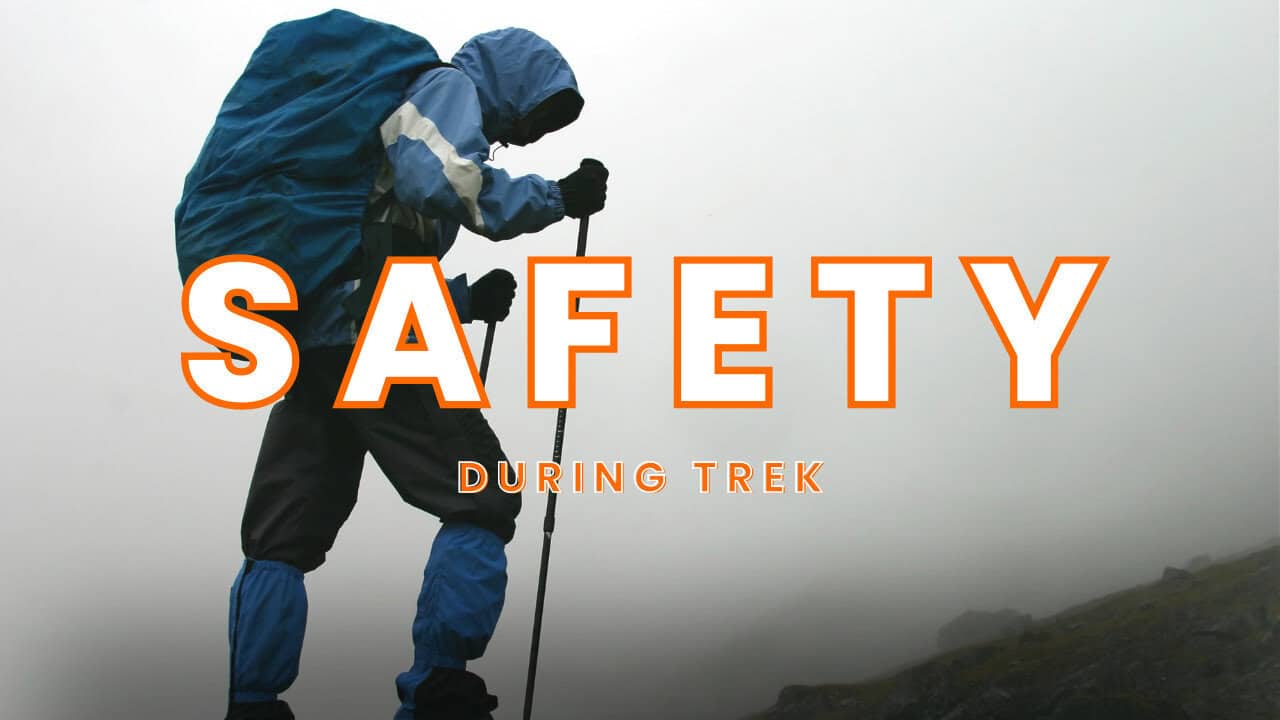
Trekking with us for the Dafeybhir Pass Trek is entirely safe because we have a team of trek leaders qualified in Wilderness first-aid and complete information about the high-altitude glitches. During the trek, we carry a full first-aid kit that contains all the essential medicines. Before trekking with us, you must ensure that you are medically fit for the trek; for us, your medical fitness is more important than anything else.
Right from our establishment, we at Trekup India have been continuously introducing new safety practices into Indian trekking to ensure the safety of voyagers. Trekup India introduced microspikes and made emergency bottled oxygen mandatory for all treks. Our trek leaders take your daily Pulse oximeter reading. We at Trekup India introduced the radio walkie-talkie as a safety communication device.
How can we ensure that your trek is safe with us?
We have noticed that most trek-organizing organizations do not follow these systems, but with time, they are following us; several competing companies are adopting these practices and organizing great, safe treks.
We ensure complete technical safety in the mountain. Our company has a vast team of more than 100 guides and trek leaders who serve on Himalayan treks. One of the best things about our team is that all the members are trained professionally by the Nehru Institute of Mountaineering, Indian Mountaineering Foundation Delhi, and Hanifle Center Outdoor Education Mussoorie.
Explore our New Safety Protocols
To ensure a perfect Trek, we have introduced some new safety checks to ensure excellent safety for our trekkers.
Our On-trek safety checks include:
- Daily oxygen saturation, along with pulse readings
- Stretchers team appointed on every trek
- Radios
- Trained mountain staff and complete safety
- Additional oxygen cylinders
- Special medical kit for high-altitude treks
- Microspikes on all types of snow treks
- Experienced Trek leaders, as well as safety
- Technical team on all snowy slopes
For Us, Your Safety Is the Top Priority
At Trekup India, you will find a team with local knowledge and fluency in English and Hindi. This helps ensure that you have a fantastic trek. Not only this, but we also pay attention to your health and safety because this is something we cannot ignore. All the team leaders involved in trekking have already undergone several professional courses in first aid, portable altitude chamber training, CPR, environmental awareness training, and advanced wilderness emergency medicine.
We also carry a complete first aid medical kit on every trek and trip we organize. Apart from the medical kit, we take a portable altitude chamber (if needed) and medical oxygen for all high-altitude treks. Our company has significant expertise in organizing all sorts of group adventure holidays for family groups, school and college groups, and friend groups. We have many travel options that suit different fitness levels and travelling styles.
Regardless of the group size, we value each and every member of our trekking groups. Our commitment to personal attention ensures that your needs and safety are always our top priority.
Who we are?
Trekup India has been a stalwart in the Adventure Tourism industry for 30 years. Since our inception, we have been dedicated to providing top-notch treks, voyages, trekking programs, and high-altitude expeditions. Our extensive experience is a testament to our commitment to your adventure and safety.
We organize treks in Uttarakhand, Kashmir, Sikkim, and Himachal while being part of the trekking community; we feature more than 75 documented Himalayan treks. In addition to other outdoor activities, our company also organizes trips for schools, colleges, and families.
Therefore, we maintain the quality of services offered to our valuable customers.
Must Read These Information Of Dafeybhir Pass Trek
Why You Should Do Dafeybhir Pass Trek
The Dafeybhir Pass trek is a remarkable journey that offers some of the most breathtaking vistas of the Sleeping Buddha shape of Mt Kanchenjunga and its surrounding mountains. This trek is an ideal choice for adventure enthusiasts who want to discover the raw natural beauty of the Himalayan range. During the trek, you will encounter over five alpine lakes, including the stunning Lampokhri, which serves as an excellent camping spot for trekkers. The Lampokhri lake is surrounded by picturesque mountain views that will leave you in awe of nature’s beauty.
Throughout most of the trek, you will traverse along the India-Nepal border, which allows trekkers to enjoy clear views of the majestic Mt Everest and the Mt Kanchenjunga range. The trek is renowned for its enchanting forests teeming with rhododendrons, silver oak, fir, and bamboo trees, making it a haven for bird watchers. As you trek through the forests, you will come across a wide variety of bird species, including the Himalayan Monal, Blood Pheasant, and the Snow Partridge.
The Dafeybhir Pass trek is a moderate trek that takes around nine days to complete, covering a distance of approximately 50 km. It is an excellent opportunity to explore the Himalayan range and experience its natural beauty up close. Moreover, the trek offers an insight into the local culture of the region, as trekkers get to interact with the friendly and hospitable locals. Overall, the Dafeybhir Pass trek is an adventure of a lifetime that should not be missed by anyone who loves the great outdoors.
Best time to do Dafeybhir Pass Trek
The Dafeybhir Pass trek, a popular trekking route in Sikkim, India, is an ideal destination for adventure seekers who want to immerse themselves in the natural beauty of the Barsey Rhododendron Sanctuary. This trek can be done in two seasons, Spring (April-May) and Autumn (October-November), depending on your preference and availability.
In Spring, the sanctuary comes to life as the rhododendron flowers bloom, and the forest is a riot of colors with various shades of pink, red, and white. The air is filled with their sweet fragrance, and the chirping of birds adds to the tranquil ambiance.
On the other hand, Autumn offers a different experience altogether. The weather is pleasant, and the skies are clear, providing unobstructed views of the surrounding mountains and valleys. The foliage is a mix of yellow, orange, and red, and the forest floor is covered with fallen leaves, creating a picturesque landscape.
Regardless of the season you choose, the Dafeybhir Pass trek is a trekker’s paradise offering an unforgettable experience that will stay etched in your memory forever.
How Difficult is the Dafeybhir Pass Trek
The Dafeybhir Pass trek presents a significant challenge due to its high elevation, exceeding 15,000 feet. The trek’s steep ascent and demanding physical nature require thorough preparation for a safe journey. Rapid acclimatization to high altitudes is essential, making prior experience in trekking in the Himalayas beneficial for building resilience to challenging conditions. Despite being considered a relatively low-risk option among high-altitude treks, the section from Lampokhri to Senkhola involves navigating steep slopes, crossing unstable streams, and traversing slippery terrain, posing specific hazards.
On Day 2, you’ll face a steep climb from Chittrey to Gairi, with an elevation gain of nearly 2,700 feet in a short span. This can be physically demanding, so make sure to plan for ample rest and recovery time at the campsite. Day 7 is no walk in the park either. It involves numerous uphill and downhill sections, with at least 1,000 feet of climbing and descending three to four times. This makes it suitable for seasoned trekkers familiar with the difficulties of Himalayan trails. To prepare for these challenges, a thorough training regimen at least 2 months before the trek is highly recommended to acclimate to the demanding terrain.
The challenging descent from Lampokhri to Naya Pataal, spanning 6,000 feet, is the most demanding day of the trek. It requires top physical condition and a consistent fitness regimen to overcome the prolonged downhill hike. With a staggering 5,000-foot gain in the first two days, the risk of altitude sickness is high. It’s crucial to take immediate action, such as monitoring oxygen levels, considering a course of Diamox, staying hydrated, and resting, if any discomfort or illness is experienced. Remember, your health is paramount. If the condition does not improve within a few hours or overnight, it’s essential to abandon the trek and seek medical help.
Precautionary guidelines include thoroughly educating oneself on Altitude Mountain Sickness (AMS) and its causes, warning signs, and symptoms before embarking on the trek. Familiarizing oneself with all aspects of AMS is essential for a safe and healthy journey. Additionally, being mindful of weather conditions, such as snowfall above 12,000 ft and sudden changes in weather at high altitudes, is crucial for journey safety.
Frequently Asked Questions About Dafeybhir Pass Trek
What is the duration Of the Dafeybhir Pass Trek
Dafeybhir Pass Trek, a journey that spans a distance of 78 km over ten days (including a day for travel to and from the trek starting point).


